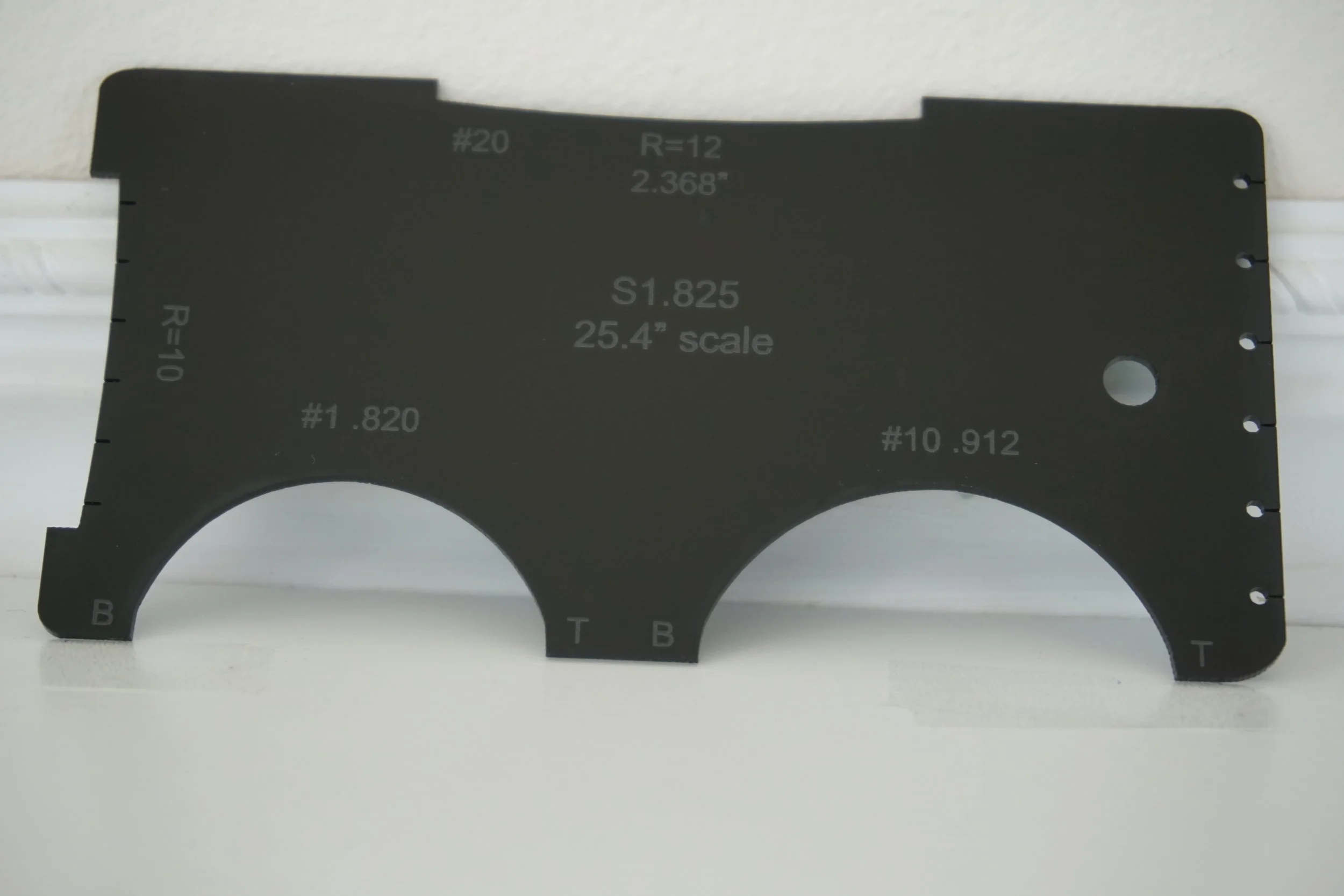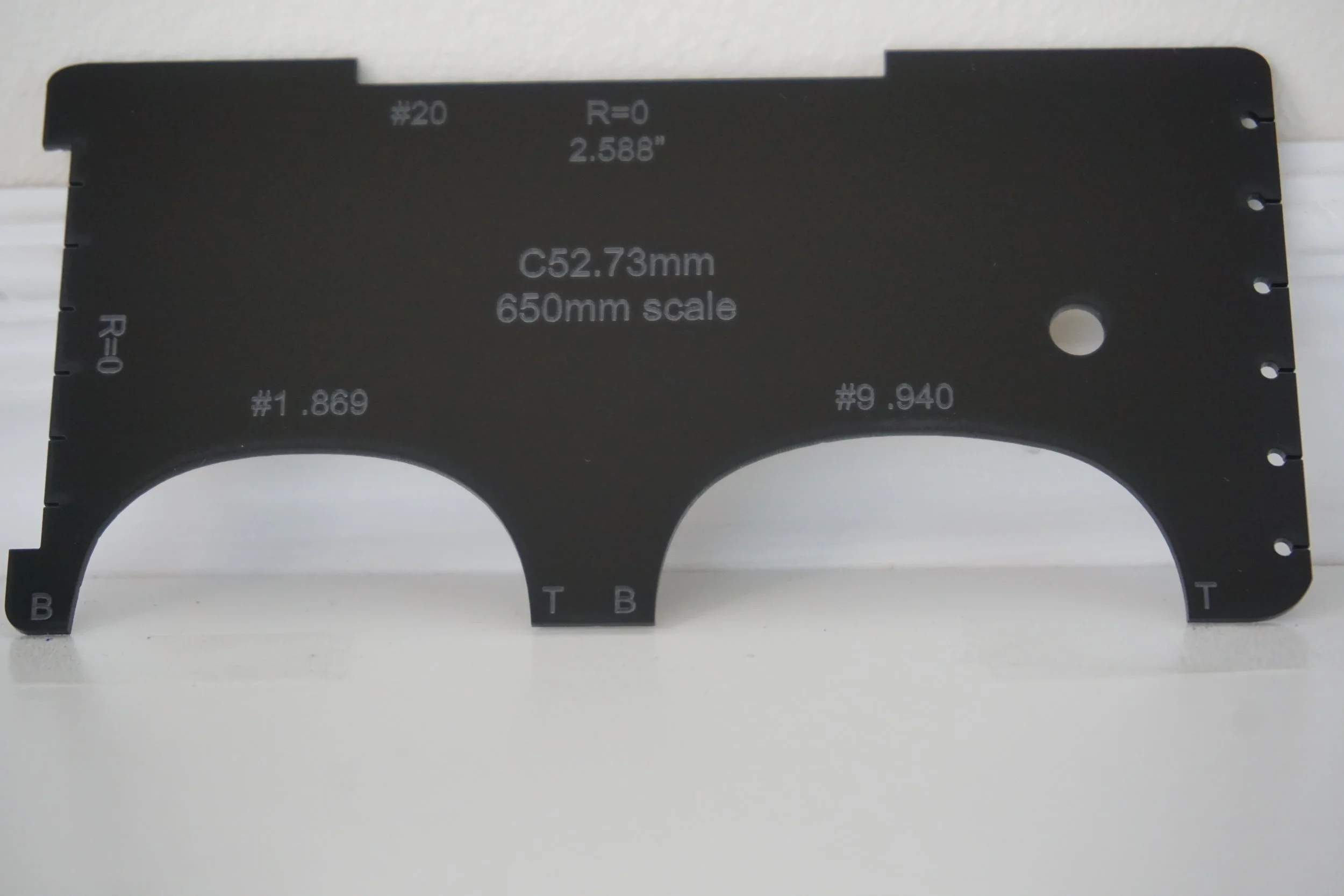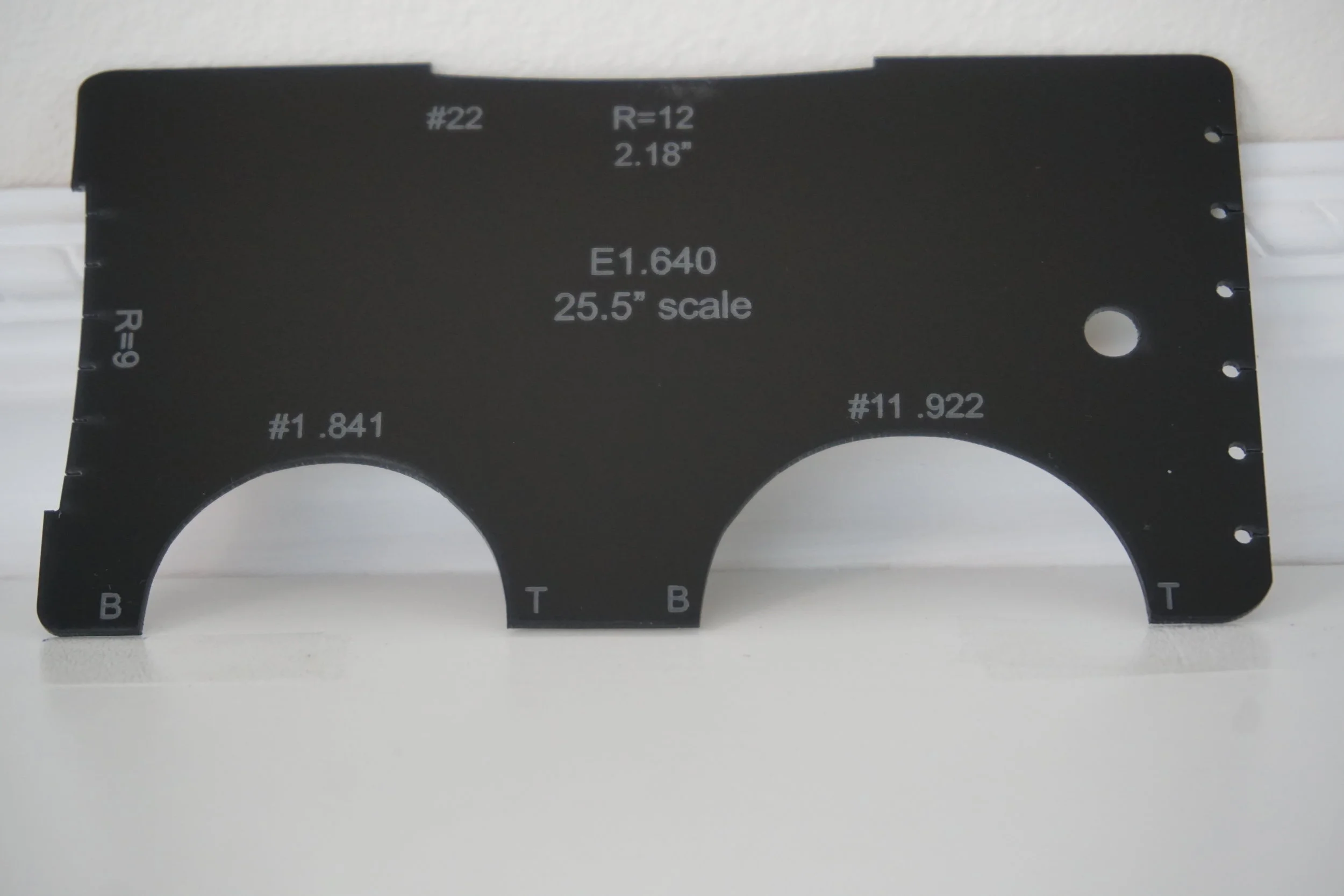Neck Templates












Neck Templates
Below are the templates that are available for purchase: All Templates are Only $21.95 USD, and FREE shipping anywhere in the world! Buy 5, get 1 free(to receive this discount you must Contact me to receive an invoice via Paypal).
This jig is an innovation jig from Luthier Suppliers!! These templates include all the information needed to duplicate a neck. In association with Edward Victor Dick of Victor Guitar , and Director of The Colorado School of Lutherie, Luthier Suppliers now offers a first time builder, or an experienced builder the chance to replicate a part of history. Edward discovered early on in his 30 year career as a custom builder that the most reliable way to ensure that his clients would like the feel of a new instrument was to precisely copy an existing neck that the player preferred. He thus began creating an archive of neck measurements and contours. The EVD Neck Contour Templates are the result of this research. Each template precisely documents 11 essential elements of an existing stringed instrument neck
Most templates are 5 3/4" width x 3" height x 1/16" thick. All templates are cut on a laser machine and are cut within 20 thousands of an inch of tolerance. Actual dimensions of each template may vary due to the width of the neck or number of strings.
Legend: From left to right: R=12 - Radius of the fingerboard at the nut in inches, R=14 - Radius of the fretboard at the last fret in inches, 2.25 - The width of the fretboard at the last fret in inches, S1.776 - The model number and also the width of the fretboard at the nut in inches, 25.4" Scale - is the scale of the guitar from nut to saddle without compensation, #10 .933 - The thickness at the 10th fret in inches, T & B - is a reference to the treble and bass side of the neck, #1 .860 - The thickness of the neck at the first fret in inches(this includes a 1/4” thick fretboard)
It is important to note that each of these templates document an actual neck. And so, due to the inconsistencies of manufacture, they may not exactly match other instruments of that maker. The maker and year of the instrument can be found in the following table. Some necks are asymmetrical, whether by intention or by accident, and these asymmetries are indicated with B for bass side and T for treble side. In the case of mandolins or 12 string guitars string spacing are almost always asymmetrical at the nut and sometimes at the bridge and so the bass and treble sides are similarly indicated. Note that not only can these templates be used to recreate necks, but individual elements can be combined to create new and original neck shapes. They can also be utilized to recreate a single element for a specific instrument (for example, make a new nut or bridge for an old Gibson mandolin).
* Cutouts for the nut and last fret are made very slightly oversize so as to more easily position the template to check fingerboard radius and string spacing. For actual size see numbers . You can either center the string spacing at the nut or, if you prefer, sneak it over to one side or the other as is sometimes done. The most important measurement here is the width of the first to last string.
** Also note that string spacings for guitars are marked mathematically perfect center to center even if existing instruments were slightly off. This was the system most commonly used on older instruments. If you prefer to use the more modern system taking into account string diameters you may want to use something like the Stewart MacDonald string spacing rule (part #0673). String spacings for mandolins and 12 string guitars were taken directly off existing instruments and as such often do take into account string diameter. They may or may not be mathematically perfect.
To see a list of all neck templates available for sale:
A rare example, could also be used as an octave mandolin
A very slim neck popular amongst people who play mostly electric guitars
A shorter scale length and thicker than a similar period OM
Narrow and slim with a slight V shape
Narrower but thicker than its modern equivalent
Similar to S1.639 but a bit bigger all the way around
Similar in width to a modern Martin but slightly thicker and more V shaped
The modern standard for bluegrass
Distinctly asymmetrical
A fairly narrow semicircular neck, particularly good for bar chords
Works well for Tommy, who has his action set very low with no neck relief
A very strong radius on fingerboard makes it excellent for bar chording
Similar to, but thicker and wider, than its modern equivalent
Strong V shape with wide string spacing at the bridge
A good example of what modern finger style players prefer
A good generic neck, comfortable with a variety of playing styles
The holy grail of finger style guitars with a very slight V shape
A stronger V shape than its predecessor
A popular guitar and an even more popular neck
Slightly wider than most at the bridge
Rounder profile than the Martin™
Slightly wider and slimmer than S1.770
A touch wider than most Goodall's™ with a shorter scale
Wider than most at the nut; particularly good for modern finger style
Fairly thick and wide neck good for those with extra large hands
A typical Martin neck just before the advent of truss rods
One of the slimmest 12 string necks on the market
The strongest V shape in the entire collection, great if you like to fret the bass string with your thumb
A touch wider than the Larivee at both the nut and the bridge
Slim D shape, hybrid electric nylon string
Rounder than the Taylor, with similarly radiused fingerboard, hybrid jazz classical
Thinner and narrower than most concert classicals; this guitar was originally owned by Paco de Lucia
Slimmer and rounder than most concert classicals, very slightly radiused fingerboard
Traditional D shape, flat fingerboard
Big neck with an extra long scale for big hands - it worked for Segovia
Another big neck but with a rounder profile and a normal scale by one of Mexico's premier luthiers
Extra bass string, string spacing similar to his Pearl Model
Extra treble and bass string, with slightly narrower string spacing than his 7 string
Humongous neck, bass strings are tuned diatonically like a theorbo and rarely fretted
Much shorter scale and narrower than a Fender, good for small hands
A touch narrower and thinner than most Fenders
Considered by some to be the most versatile neck ever made
Thicker than most Strats, especially at the nut end
Rounder profile than a Fender, with a shorter scale
More D shaped profile than a Les Paul
Similar to a Les Paul but a touch wider
Very thin and flatter on the back than a Fender™
Bigger all around than most electrics, a true acoustic/electric
4 neck contours @ frets # 1, 4, 5, & 15 - excellent example of a traditional bluegrass banjo
3 neck contours @ frets # 1, 5, & 15 - slightly bigger all the way around than B1.187 for a more contemporary feel
4 neck contours A frets # 1, 4, 5, & 14 -excellent example of a modern clawhammer style banjo
Narrow by modern standards with an almost flat fingerboard
Thinner than the Loar with a strongly radiused fingerboard
Wider string spacing @ the bridge than the Loar, radiused fingerboard
Stronger V shape than the Loar with slightly wider string spacing, radiused fingerboard
Significantly wider string spacing @ the bridge and rounder than a Gibson
Very strong V shape and flat fingerboard
Flat fingerboard, extra long scale
Radiused fingerboard, wider string spacing than the Trinity College version
Wider @ the nut but narrower @ the bridge than the Anderson, V shape
































































Similar to, but slightly bigger than most tenor banjo necks